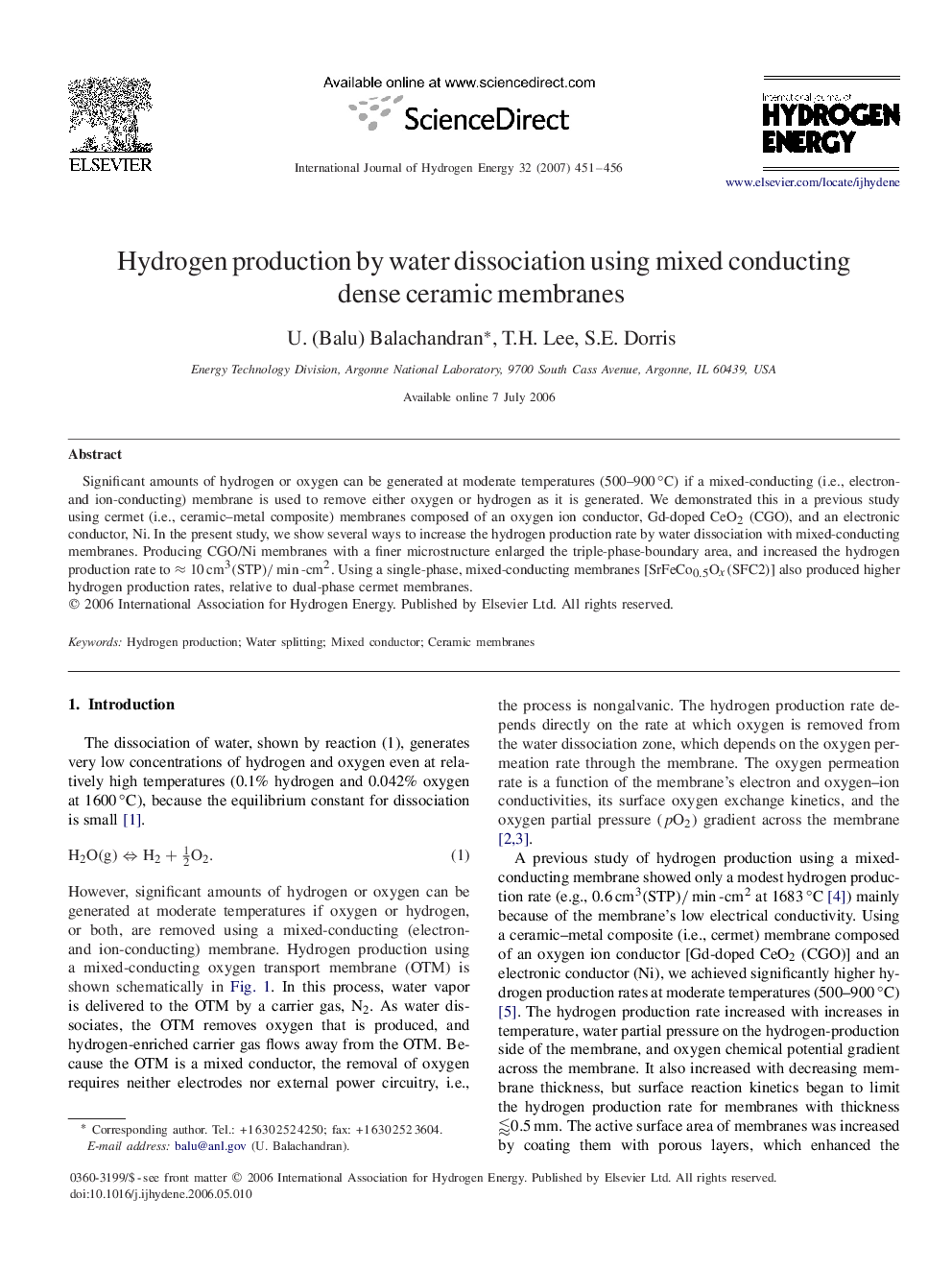| کد مقاله | کد نشریه | سال انتشار | مقاله انگلیسی | نسخه تمام متن |
|---|---|---|---|---|
| 1275297 | 1497679 | 2007 | 6 صفحه PDF | دانلود رایگان |

Significant amounts of hydrogen or oxygen can be generated at moderate temperatures (500–900 °C) if a mixed-conducting (i.e., electron- and ion-conducting) membrane is used to remove either oxygen or hydrogen as it is generated. We demonstrated this in a previous study using cermet (i.e., ceramic–metal composite) membranes composed of an oxygen ion conductor, Gd-doped CeO2CeO2 (CGO), and an electronic conductor, Ni. In the present study, we show several ways to increase the hydrogen production rate by water dissociation with mixed-conducting membranes. Producing CGO/Ni membranes with a finer microstructure enlarged the triple-phase-boundary area, and increased the hydrogen production rate to ≈10cm3(STP)/min-cm2. Using a single-phase, mixed-conducting membranes [SrFeCo0.5Ox(SFC2)][SrFeCo0.5Ox(SFC2)] also produced higher hydrogen production rates, relative to dual-phase cermet membranes.
Journal: International Journal of Hydrogen Energy - Volume 32, Issue 4, March 2007, Pages 451–456